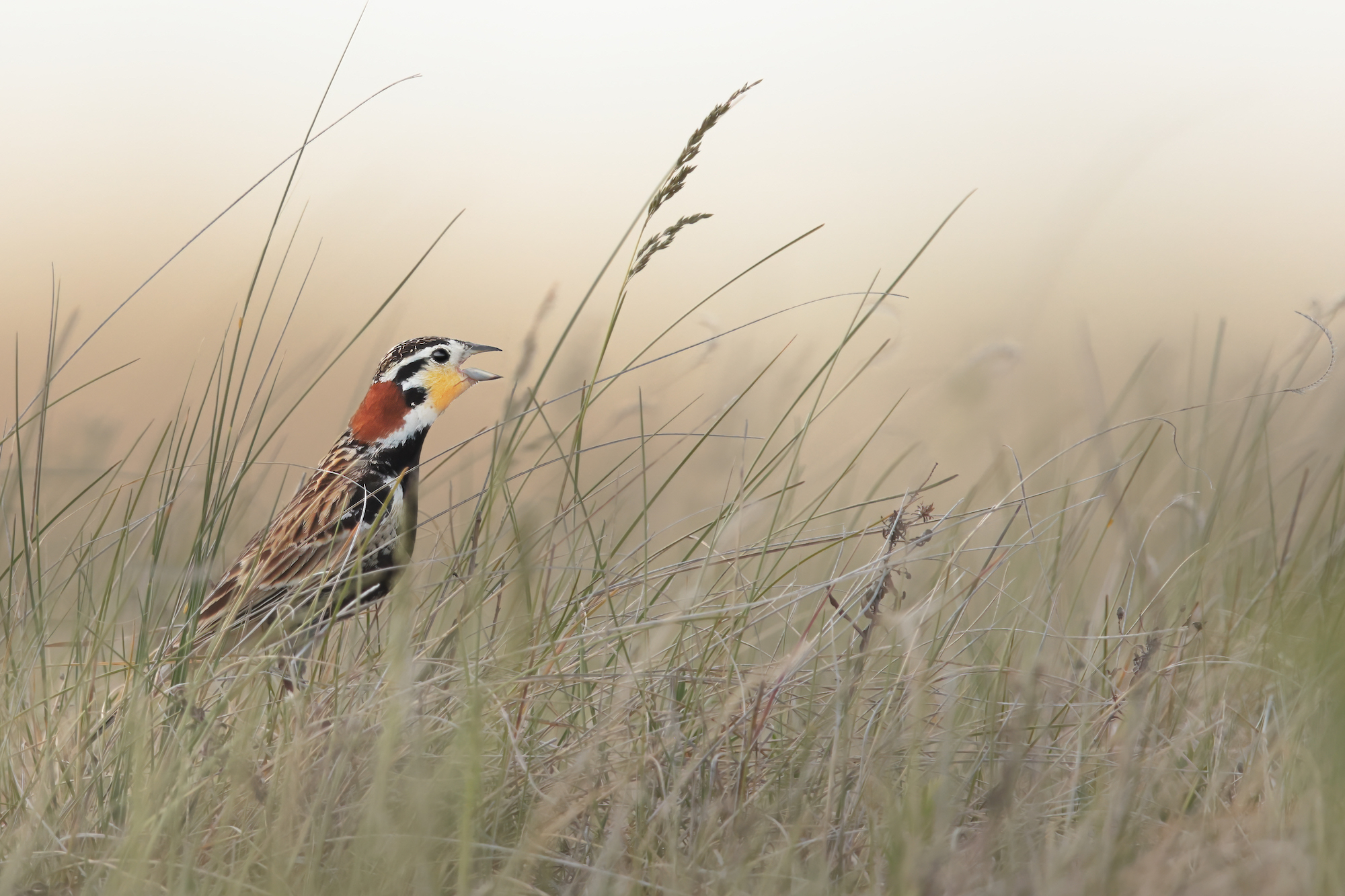The Midwest of the United States is a vast area of native grasslands that support a range of animals and birds that are specialized to thrive in the environment. However, the increasing conversion of these wild places to agricultural fields, along with ongoing droughts and invasive plant species, threatens the habitat and the native birds that rely on it.
State of the Birds Report 2025
This groundbreaking report states that the grasslands of the Midwest make up some 320 million acres, but 1-2 million acres are being lost every year. Shortgrass prairie in the northwest, tallgrass prairie in the east, and mixed-grass prairie in the south are all under threat. Over 50% of the birds relying on these ecosystems are in rapid decline. In fact, the grasslands category has more Tipping Point species than any other terrestrial biome. Some birds, like the Mountain Plover, are under threat of local extinction.


Action
Organisations at a grassroots level are not only trying to halt the decimation of the grasslands but also to restore millions of acres. By involving stakeholders like farmers, landowners, Indigenous groups, conservation organizations, and governing bodies, the Central Grasslands Roadmap Initiative is coordinating efforts to reduce the damage to bird species.
Audubon, possibly the most important and prevalent non-profit bird protection organisation, is leading the way with programs informed by science and aimed at guiding ranchers to develop grazing systems that enhance rather than destroy local grasslands. As seen over and over again, when the will is there, progress can be made. An example cited in the report is of an Audubon-designed crop rotational system that supported habitats of the Baird’s Sparrow, and this resulted in an increase of their numbers by 20% in three years.
The Central Grasslands Roadmap Initiative is a collaborative, international effort focused on the conservation of the grasslands ecosystem. The initiative aims to guide and coordinate conservation efforts to address them. It emphasizes a collaborative approach, bringing together diverse stakeholders, including ranchers and agricultural producers, Indigenous Nations, federal, state, and provincial agencies as well as non-governmental organizations.
The organization promotes sustainable management practices that benefit both wildlife and human communities. It seeks to address the major threats to grasslands, such as habitat conversion to cropland, encroachment of woody plants, and habitat fragmentation.


Final Thoughts
It is easy to assume that environments like the midwest grasslands are not impacted by crops and other changes in use. Birds adapt to such things, right? This hugely important report puts that theory to bed with a resounding No! Open grasslands might not have the accessibility or glamour of forests or coastlines, but they are just as important and are under more threat than any other environment in the United States. Successful protection and a reversal of the damage comes when people come together to share priorities and goals to enable the land to benefit people and birds alike.

